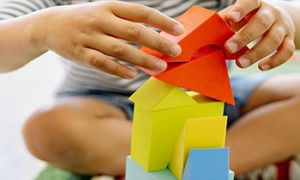The "Health" theme introduces children to essential practices like washing hands, brushing teeth, and eating balanced meals. The following article provides Health Theme Activity Ideas, Importance Of Heatlh Theme, Goals For Health Theme, Linking To The EYLF, and more.
Healthy Habits
-
Fruit and Veggie Matching Game: Create cards with pictures of fruits and vegetables. Have children match them by color or shape while discussing their benefits.
-
Stretch and Move Time: Teach simple stretches or movements, like touching toes or reaching up high, to promote physical activity and body awareness.
-
Healthy Plate Sorting: Provide cut-outs of various foods and let children assemble a healthy plate, discussing balanced meals.
-
Gardening Fun: Plant seeds in small pots or garden beds. Teach children about how healthy food like fruits and vegetables grow.
-
“Where Do Foods Grow?” Activity: Show photos or toys of foods, then talk about whether they grow in soil, on trees, or under the ground.
-
Superhero Hygiene Challenge: Pretend to be hygiene superheroes who fight germs by brushing teeth, washing hands, and covering coughs.
-
H2O Art: Use watercolors to create art while talking about how drinking water is essential to staying healthy.
-
Mindfulness for Kids: Practice simple breathing exercises to help children relax and connect with their emotions.
-
Get Moving Obstacle Course: Set up an obstacle course with jumping, crawling, and balancing to encourage physical activity in a playful way.
-
Snack Prep Helpers: Have children participate in preparing healthy snacks, like fruit salads or veggie sticks, fostering independence and healthy choices.
Healthy Food Activities
-
Fruit and Veggie Sorting: Provide pictures, toy foods, or real fruits and vegetables. Have children sort them into groups like "red foods," "green foods," or simply healthy categories.
-
Make a Rainbow Plate: Encourage kids to create a plate of healthy foods representing each color of the rainbow—carrots for orange, spinach for green, etc.
-
Healthy Grocery Shopping Role-Play: Set up a mini-store with pretend food. Guide children to shop for "healthy" items and discuss their choices.
-
Gardening Activity: Plant seeds for fruits or vegetables and explain how fresh foods grow and contribute to health.
-
Food Collage: Let kids cut out pictures of healthy foods from magazines and create a collage that showcases good choices.
Unhealthy Food Awareness Activities
-
Sugar Science Experiment: Show children how sugary drinks affect teeth using a hard-boiled egg soaked in cola overnight. Discuss the importance of limiting sugar intake.
-
Healthy vs Unhealthy Chart: Create a chart with columns for healthy and unhealthy foods. Provide images or toy foods for children to place in the correct column.
-
Junk Food Toss: Use bean bags labeled with "junk food" items. Have kids toss them into a bin labeled "trash" to reinforce that these are occasional treats, not daily choices.
Combined Activities
-
Healthy Snack Creation: Teach kids to make simple snacks like fruit skewers or yogurt parfaits. Compare these to store-bought snacks and talk about the difference.
-
MyPlate Puzzle Game: Create a puzzle with sections for fruits, grains, proteins, and vegetables. Let kids fill each section with foods that match, avoiding unhealthy choices.
Activity Ideas For Physical Exercise
Indoor Activities
-
Animal Movements: Encourage children to move like animals—hop like a kangaroo, slither like a snake, or crawl like a bear.
-
Balloon Volleyball: Use balloons instead of balls for safe, fun indoor volleyball. Set up a string as the net and let the kids practice their coordination.
-
Dance Party Freeze: Play music and let kids dance freely. When the music stops, they have to freeze in silly poses.
-
Obstacle Course: Set up an indoor obstacle course using pillows to jump over, tunnels to crawl through, and soft toys to toss.
-
Follow the Leader: Lead children in activities like skipping, jumping, or hopping and let them take turns being the leader.
Outdoor Activities:
-
Nature Treasure Hunt: Create a list of items like leaves, sticks, and rocks for children to collect while walking or running outdoors.
-
Chalk Hopscotch: Draw hopscotch grids on the ground with chalk and guide children to hop and jump across the squares.
-
Bubble Chase: Blow bubbles and let children run after them to pop as many as they can.
-
Balance Beam Walking: Use a low piece of wood or draw a line on the ground for kids to practice walking along it to improve balance.
-
Water Play Races: On a hot day, use cups or buckets to carry water in a relay race without spilling—it’s great fun and cooling too!
Combination Activities
-
Yoga Storytelling: Combine yoga poses with a story, like "stretch tall like a tree," "bend low like a frog," or "curl up like a cat."
-
Shape Running: Draw shapes on the ground with chalk. Call out a shape, and kids run to it—adding a fun learning element to physical play.
-
Beanbag Toss: Set up targets for kids to throw beanbags at, which helps with coordination and movement.
-
Parachute Play: Use a large parachute or sheet for group games like bouncing balls on top or ducking underneath.
-
Rolling Races: Race by rolling on mats or the grass—it’s hilarious and engaging.
Importance Of Health Theme For Preschoolers
Teaching children about being healthy is fundamental to their overall development and well-being. Here’s why it's so crucial:
1. Laying the Foundation for Healthy Habits
-
Early exposure to health-related knowledge helps children develop habits like regular handwashing, brushing teeth, and eating balanced meals. These practices can last a lifetime.
2. Promoting Physical Well-Being
-
Encouraging physical activity and a healthy diet supports growth, strengthens immunity, and reduces the risk of future health issues.
3. Enhancing Emotional Development
-
Understanding emotional health enables children to recognize, express, and manage feelings effectively, leading to better social interactions and resilience.
4. Fostering Safety Awareness
-
Teaching children about personal safety, such as hygiene, understanding illness, and avoiding harmful substances, helps them make informed and safe choices.
5. Empowering Self-Care
-
Learning how to take care of their own bodies fosters independence and confidence in young children.
6. Setting the Stage for Academic Success
-
Healthy children are more likely to have better focus, energy levels, and cognitive abilities, contributing positively to their learning journey.
Goals For Health Theme
Further Reading
Critical Reflection Questions For NQS QA2
EYLF Outcome 3: Children Have A Strong Sense Of Wellbeing V2.0
Encouraging Parents To Pack Healthy Foods For Childcare
Strategies To Support The Mental Health Of Toddlers
Dental Health
Healthy Eating







 Open ended questions cannot be responded to with one word answers such as yes or no. These types of questions enables a child to provide
Open ended questions cannot be responded to with one word answers such as yes or no. These types of questions enables a child to provide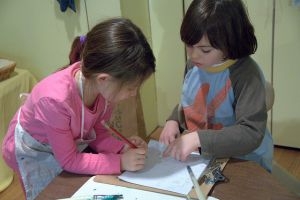 During your child’s preschool years, an important milestone begins to emerge. This is the development of pre-writing skills. Pre-writing skills are used to encourage, develop
During your child’s preschool years, an important milestone begins to emerge. This is the development of pre-writing skills. Pre-writing skills are used to encourage, develop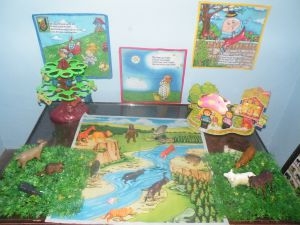 Open ended materials enables children to play freely. They are objects that have no rules to follow, use or function. Raw materials that can be
Open ended materials enables children to play freely. They are objects that have no rules to follow, use or function. Raw materials that can be An Acknowledgment of the Country is a way of showing respect for the Traditional Owners and can be given by both non-Indigenous people and Aboriginal
An Acknowledgment of the Country is a way of showing respect for the Traditional Owners and can be given by both non-Indigenous people and Aboriginal Language plays an important role in a child’s development. It enables a child to communicate effectively with their family, learn at school, socialize with friends,
Language plays an important role in a child’s development. It enables a child to communicate effectively with their family, learn at school, socialize with friends,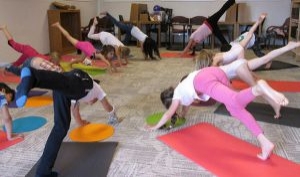 Like adults, children have to deal with their own stress in life. Moving house, starting a new school, preparing for a new sibling - these are
Like adults, children have to deal with their own stress in life. Moving house, starting a new school, preparing for a new sibling - these are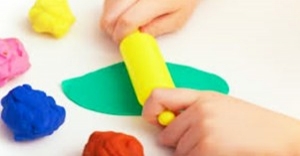 Playdough is such a versatile material. It provides numerous benefits to children as they manipulate it, it is safe and soothing and provides children with
Playdough is such a versatile material. It provides numerous benefits to children as they manipulate it, it is safe and soothing and provides children with Teaching children about sustainability enables them to appreciate and respect the natural environment. Early childhood services can provide meaningful hand on learning experiences in order
Teaching children about sustainability enables them to appreciate and respect the natural environment. Early childhood services can provide meaningful hand on learning experiences in order Recycling is an important concept that teaches children to care for the environment. It encourages children to be responsible and show a growing appreciating for
Recycling is an important concept that teaches children to care for the environment. It encourages children to be responsible and show a growing appreciating for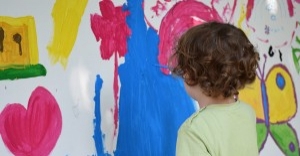 When children apply paint to paper, glue things together, or pound a lump of clay, they experiment with colour, shape design and texture.
When children apply paint to paper, glue things together, or pound a lump of clay, they experiment with colour, shape design and texture.

